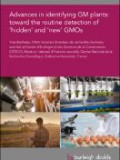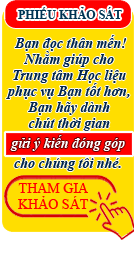


|
|
|
Tác giả: Alec Kowalewski, Charles Schmid, Ruying Wang and Emily Braithwaite |
|
Nhà xuất bản: Burleigh Dodds Science Publishing. Năm XB: 2023. Mô tả: 18Tr URI https://library.oapen.org/handle/20.500.12657/61527 https://creativecommons.org/licenses/by/4.0/ |
|
Nội dung: Organic matter (OM) management is a critical component in sustainable turfgrass management. Organic matter improves the soils’ ability to hold nutrients and water. However, when OM accumulation is excessive, several detrimental effects develop. Turfgrass is a tillering plant, producing a considerable amount of lateral growth, which will cause inordinate OM accumulation. The objectives of this chapter are to outline how OM effects turfgrass, the available methods for monitoring and measuring OM accumulation, outline correlations between OM levels and disease activity/microbial populations, and identify successful OM management practices. |
|
|
|
Tác giả: Matthew T. Elmore, Aaron J. Patton, Travis W. Gannon,James T. Brosnan |
|
Nhà xuất bản: Burleigh Dodds Science Publishing. Năm XB: 2023. Mô tả: 49Tr https://library.oapen.org/handle/20.500.12657/61553 https://creativecommons.org/licenses/by/4.0/ |
|
Nội dung: Weeds are a major pest that reduce aesthetics and functionality of turfgrass systems. Knowledge required for effective weed management has evolved in recent years as weeds develop resistance to herbicides, government restriction of broad-spectrum herbicides has increased, and registration of new herbicide active ingredients has slowed. This chapter discusses relevant and recent developments in synthetic herbicides, alternatives to synthetic herbicides, and non-chemical strategies for weed management including cultural, physical, and genetic approaches. Advances in integrated weed management strategies and barriers preventing adoption of integrated weed management strategies are also discussed. Opportunities for research and development to improve integrated weed management are presented throughout. |
|
|
|
Tác giả: Bertheau, Yves |
|
Nhà xuất bản: Burleigh Dodds Science Publishing. Năm XB: 2021. Mô tả: 64Tr URI https://library.oapen.org/handle/20.500.12657/61501 https://creativecommons.org/licenses/by/4.0/ |
|
Nội dung: In 2018 the Court of Justice of the European Union recalled that organisms with genomes modified by artifactual techniques should be considered GMOs under European regulations. GMOs derived from cultures of cells isolated in vitro or from new genomic techniques must therefore be traceable. This chapter reviews the various technical steps and characteristics of those techniques causing genomic and epigenomic scars and signatures. These intentional and unintentional traces, some of which are already used for varietal identification, and are being standardized, can be used to identify these GMOs and differentiate them from natural mutants. The chapter suggests a routine procedure for operators and control laboratories to achieve this without additional costs. |
|
|
|
Tác giả: Joseph S. Nelson, Terry C. Grande, Mark V. H. Wilson. |
|
Nhà xuất bản: John Wiley & Sons. Năm XB: 2016. Mô tả: 707Tr, kích thước: 22cm. Số định danh: 597.012/ N424. Vị trí: Phòng Học liệu Ngoại văn. |
|
Nội dung: Fishes of the World, Fifth Edition is the only modern, phylogenetically based classification of the world’s fishes. The updated text offers new phylogenetic diagrams that clarify the relationships among fish groups, as well as cutting-edge global knowledge that brings this classic reference up to date. With this resource, you can classify orders, families, and genera of fishes, understand the connections among fish groups, organize fishes in their evolutionary context, and imagine new areas of research. ... |
|
|
|
Tác giả: Chu Thị Thơm, Phan Thị Lài, Nguyễn Văn Tó. |
|
Nhà xuất bản: Lao động. Năm XB: 2006. Mô tả: 139Tr. Kích thước: 13x19cm |
|
Nội dung: Phần 1. Vài nét về sử dụng vi sinh vật gây bệnh cho sâu hại. Phần 2. Các phương pháp ứng dụng công nghệ sinh học để trừ sâu hại. Phần 3. Tăng hiệu quả phòng trừ sâu bằng vi sinh vật. |











